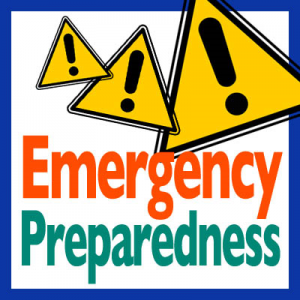Emergency Preparedness Gas Stations With Transfer Switches

By Mike Sikula, NYS Bureau of Weights & Measures
States that have experienced a severe weather event or other energy/fuel supply emergency or are
concerned about such an event occurring in their state may be considering requirements for having
retail gas stations install transfer switches so they are generator ready. In order to safely transfer the
electrical load from a utility to a generator, a transfer switch must be installed. Installing a transfer
switch is complicated and should be performed by a licensed electrician. Of course having a transfer
switch only makes the station generator ready. In order to power the station a generator will need to be
supplied and typical generators can be 50 kw or larger.
New York State implemented such a plan in direct response to Super-storm Sandy when many gas
stations in the Long Island/New York City area had gasoline in their storage tanks but did not have
power to dispense the fuel, causing frustration and hardship for many residents. The program referred,
to as “Fuel-NY” (http://stormrecovery.ny.gov/fuel-ny) is designed to maintain a supply of motor fuel
following an energy or fuel supply emergency and thus help provide a return to normalcy. The
components of the program include; a fuel reserve to maintain a supply of motor fuel, strategically
located gas stations with transfer switches to distribute the fuel and a supply of generators to power the
gas stations. State funds are also available to help cover the costs of installing the transfer switch, which
is required and installation of a permanently affixed generator, which is voluntary.
As part of the Fuel-NY program, stations within one-half mile of an exit off a controlled access highway
or one-half mile from an evacuation route are required to install a transfer switch. Exemptions were
provided for stations that sold less than 75,000 gallons of motor fuel on average per month. Since the
start of the Law in 2013, hundreds of stations in the Long Island/New York City area now have transfer
switches and are prepared to dispense fuel should another disaster occur. Of course, the best case
scenario is that we never have to implement this plan.
States that have experienced a severe weather event or other energy/fuel supply emergency or are
concerned about such an event occurring in their state may be considering requirements for having
retail gas stations install transfer switches so they are generator ready. In order to safely transfer the
electrical load from a utility to a generator, a transfer switch must be installed. Installing a transfer
switch is complicated and should be performed by a licensed electrician. Of course having a transfer
switch only makes the station generator ready. In order to power the station a generator will need to be
supplied and typical generators can be 50 kw or larger.
New York State implemented such a plan in direct response to Super-storm Sandy when many gas
stations in the Long Island/New York City area had gasoline in their storage tanks but did not have
power to dispense the fuel, causing frustration and hardship for many residents. The program referred,
to as “Fuel-NY” (http://stormrecovery.ny.gov/fuel-ny) is designed to maintain a supply of motor fuel
following an energy or fuel supply emergency and thus help provide a return to normalcy. The
components of the program include; a fuel reserve to maintain a supply of motor fuel, strategically
located gas stations with transfer switches to distribute the fuel and a supply of generators to power the
gas stations. State funds are also available to help cover the costs of installing the transfer switch, which
is required and installation of a permanently affixed generator, which is voluntary.
As part of the Fuel-NY program, stations within one-half mile of an exit off a controlled access highway
or one-half mile from an evacuation route are required to install a transfer switch. Exemptions were
provided for stations that sold less than 75,000 gallons of motor fuel on average per month. Since the
start of the Law in 2013, hundreds of stations in the Long Island/New York City area now have transfer
switches and are prepared to dispense fuel should another disaster occur. Of course, the best case
scenario is that we never have to implement this plan.
- ka888f7a57eb1942ee4d9cef62f5b5941b.jpg